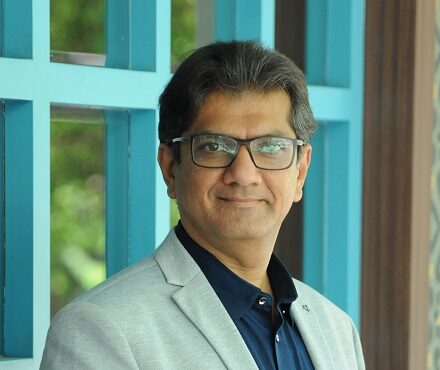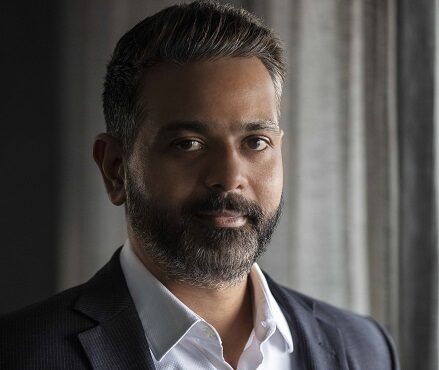
CXOToday has engaged in an exclusive interview with Meenakshi Vashisht, Founder-CEO, TekUncorked
- What is TekUncorked and how did it start?
TekUncorked was founded in 2019 by Meenakshi Vashist, Ram Sethi and Rohit Monga with a motive of “Do it for India”. Meenakshi’s life changed forever when she went on a trek to Chamoli district in Uttarakhand. On her trek, she saw how rural people of Chamoli get affected due to lack of reliable electricity. It affected their economic activities, healthcare and their day to day life. Later in the coming years she traveled across more than 20,000 km of rural, suburban, and urban India, meeting people from academia, various grass root enterprises, industry and utilities to understand the problems in power distribution in India. The TekUncorked team realized that the power networks in India were spread across more than 3 million square kilometers, the infrastructure is old and offered minimal to no smartness. This made the electricity distribution networks vulnerable, inefficient and fault prone. TekUncorked decided to innovate and develop technology to make grid operations smart, predictive, reliable and safe with a vision of reliable, outage-free electricity for all
- How does TekUncorked ensure its products and services have a positive environmental impact?
The increasing population worldwide demands more and more facilities, which in turn mandates the energy service providers to escalate their generation capacity. Despite the proliferation of renewable energy, over 60% of electricity generation still depends on fossil fuels. TekUncorked’s technology, by eliminating grid losses, ensures that the existing capacity itself can support more consumers thereby reducing the need for adding power generation capacity. This effectively leads to reduction of the carbon footprint of the grid.
- Can you explain the role or process of LVIOT
The invention of the Internet of Things (IoT) is one of the most significant technological advances of the 21st century. The IoT is a network of linked hardware, software, and physical nodes that enables data gathering and distribution. The networked “things” aspire to provide everyday objects with the ability to share data and information on their own and at regular intervals. The LVIoT (Low Voltage- IoT) devices helps with efficient management of last mile distribution networks. The platform comprises connected edge hardware with cloud services, a powerful AI engine, and insight-rich dashboards and APIs. This integrated approach ensures that data from various sensors and devices can be efficiently collected, analyzed, and acted upon in real-time.These hardware components enable the seamless monitoring of health of the power networks. With this data, utilities and distribution companies can gain valuable insights into the performance of their networks, identify inefficiencies, and proactively address potential issues.
- How do you ensure the quality and reliability of your device?
Ensuring the quality and reliability of our LVIoT device is our top priority, and we follow a rigorous and comprehensive testing process to achieve this goal. From the initial design phase to the manufacturing and post-production stages, our team of skilled engineers and quality experts conduct thorough inspections and testing at every step. We adhere to industry standards and conduct performance, durability, and safety tests to validate the device’s functionality and robustness. Additionally, we solicit valuable feedback from power grid customers and continuously improve our product through iterative updates. The commitment for delivering a dependable and superior device drives our relentless pursuit of excellence in quality and reliability. Furthermore, we source components from trusted suppliers and employ strict quality control measures to maintain consistency and reliability throughout production.
- What is the biggest change you expect to see in the power sector, a decade from now?
The energy industry is going through a massive transformation right now. A decade from now, one of the most significant changes expected in the power sector is the widespread adoption of renewable energy sources. As concerns about climate change escalate and the demand for sustainable energy solutions grows, renewable energy technologies such as solar, wind, and hydropower are poised to take center stage. This alone could eliminate as many as 7 million deaths a year from air pollution and slow (or reverse) the effects of global warming. The next is transitioning away from our current system of highly centralized energy grids run by monopolistic energy providers, towards distributed energy production systems. The rise of distributed energy resources (DERs) will enable greater decentralization of the power grid. In this case microgrids will become more prevalent,where consumers can generate their own electricity for their own needs. Finally the use of digital machines, devices, and technology to optimize energy production, infrastructure, and use. AI-driven predictive analytics and control systems will improve grid management and increase energy efficiency. The Smart grid technologies will be widely implemented to accommodate the variability of renewable energy sources and enhance grid efficiency.
- Major challenges being faced in energy/power sector today
Access to reliable and affordable energy remains a challenge for many, especially in developing regions. Addressing energy poverty and ensuring equitable access to modern energy services is crucial for sustainable development and social well-being. The next major problem is the aging Infrastructure.Many power grids and energy infrastructures in various countries are aging and in need of upgrades.India’s power distribution infrastructure is relatively old, with some lines and equipment dating back to the 1950s and 1960s. Around 40% of India’s distribution lines and transformers are more than 25 years old and the average life for the same is around 40 years but their reliability and performance may start to deteriorate due to lack of intime maintenance. The maintenance and modernization of aging infrastructure are crucial for ensuring grid reliability, reducing energy losses, and preventing system failures. Finally, the growing demand
for energy, especially in urban areas and during peak periods, poses serious problems. This requires effective demand-side management and energy conservation efforts to avoid grid overload and maintain system stability. The inadequate supply of electricity can lead to power cuts, load shedding, and disruptions in industrial and commercial operations, which can have a significant impact on the economy and people’s lives.
- Can you share few achievements/milestones of TekUncorked?
Founded in 2019, TekUncorked has successfully completed over 45 months of field operations, accomplishing significant milestones along the way. Our continuous growth trajectory is a testament to our dedication and commitment to excellence in the industry. We are currently engaged with Utilities in 7 States. We were declared the winner of UN Habitat’s Katowice Energy Challenge and chosen to be part of the Third Derivative cohort in 2022
- Upcoming future plans for the company?
As we look ahead to the future, TekUncorked is excited to embark on several initiatives to further expand and strengthen our presence in the market. We plan to focus on developing and promoting sustainable solutions that align with the global shift towards green technologies and contribute to a cleaner, greener future. Our customers are at the heart of everything we do. We will continue to prioritize their needs and feedback, actively seeking to understand their challenges and preferences and achieve the right product-market-fit. We are also investing in talent development, providing opportunities for professional growth and an innovative workplace. We are confident that our dedication to excellence, innovation, and customer satisfaction will pave the way for a bright and prosperous future.








